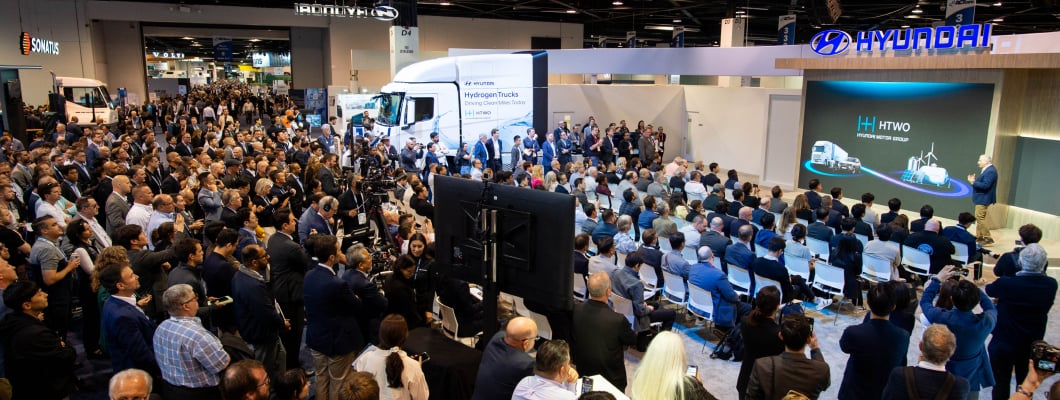In a keynote that underscored both realism and resolve, Volvo Group Chief Technology Officer Lars Stenqvist addressed the ACT Expo audience with a clear message: reaching net-zero emissions in commercial transport will require a broad toolkit of solutions, including battery electric vehicles (BEVs), hydrogen fuel-cell systems, and even internal combustion engines powered by renewable fuels.
“Our future is electric — with batteries and hydrogen. But it also includes internal combustion engines, powered in a sustainable way,” Stenqvist said, laying out Volvo’s pragmatic, multi-pathway approach to decarbonization.
Stenqvist emphasized that Volvo Group remains fully committed to its goal of becoming a net-zero company by 2040. To achieve this, the company is pursuing what he called a “dual-technology strategy” centered on BEVs and hydrogen-powered trucks, but without abandoning the combustion engine. Instead, Volvo is investing in optimizing ICEs to run on renewable and low-carbon fuels such as HVO, biogas, and potentially hydrogen combustion — ensuring no viable solution is left behind in the race to decarbonize.
“We must be technology open. Battery-electric trucks and hydrogen-powered trucks are not competing. They are complementary,” he told the crowd, adding that combustion engines—when fueled sustainably—can continue to play a key role, particularly in regions lacking charging or hydrogen infrastructure.
Volvo’s conviction in this multi-technology strategy is backed by data and deployment. Stenqvist noted that the company has already delivered more than 3,500 electric trucks to customers across 45 countries, leading the global market in Class 8 electrification. In North America, Volvo Trucks continues to scale electric truck deployment, supported by programs such as Volvo LIGHTS and partnerships focused on building the charging ecosystem.
Looking to hydrogen, Volvo is advancing both hydrogen fuel-cell technology, through its cellcentric joint venture with Daimler Truck, and hydrogen combustion as part of its roadmap to serve longer-range and heavy-duty segments. “Hydrogen is key for flexibility and long-haul operations,” Stenqvist said. “We are developing both fuel cells and hydrogen ICEs.”
Throughout the keynote, Stenqvist returned to the theme of systems-wide decarbonization. Volvo’s sustainability strategy extends beyond vehicles to include manufacturing, supply chains, and the circular economy. “It’s about the full value chain. Our goal is net-zero not just in our trucks, but in everything we do,” he emphasized.
Calling for collaboration, Stenqvist urged public and private stakeholders to accelerate infrastructure development, policy support, and cross-industry cooperation. “We cannot make this transition alone,” he said. “The speed of decarbonization depends on all of us — OEMs, fleets, policymakers, and technology providers — working together.”
Closing his speech, Stenqvist remained optimistic despite the challenges.
“We are transforming transportation, globally and collectively. Let’s continue driving change, faster and together.”
This article was originally published on ACT News and can be read here.


